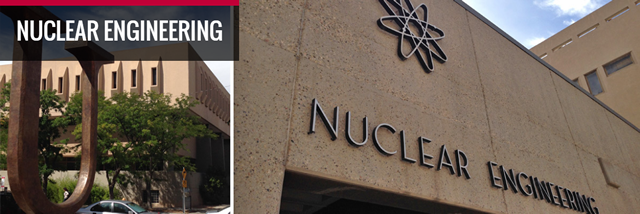
Nuclear Engineering ETDs
Publication Date
Spring 5-13-2023
Abstract
Energy efficiency and cost reduction can both be improved upon using overall higher temperatures for the working fluid. This interest is shared in both nuclear energy as well as concentrated solar power. To achieve higher temperatures would require industry to change working fluids. The United States Department of Energy set out a goal of operating concentrated solar to above 700℃. This would help reduce the cost by having more efficiency in the thermal energy storage, while not a concern for nuclear, these high temperatures can reduce the safety risk and pressure use with the implementation of molten salts. The National Solar Thermal Test Facility at Sandia National Labs set out to solve this problem by using a ternary molten chloride salt system. Ternary molten chloride salts favor everything thermal hydraulically, they due pose a serious issue when it comes to high corrosive attack. Major loop components would be exposed to this environment like piping, valves, tanks, pumps, and heat exchangers. This study will go through a vi literature review of the best metal alloys for a molten chloride salt system, where four will be selected to perform further evaluation in an ideal environment with the correct ternary salt composition. This study will help determine the highest performing alloy for molten chloride salt systems from, Inconel 600, Inconel 617, Haynes 230, and Hastelloy C276.
Keywords
Molten salt, Haynes, Inconel
Document Type
Dissertation
Language
English
Degree Name
Nuclear Engineering
Level of Degree
Doctoral
Department Name
Nuclear Engineering
First Committee Member (Chair)
Minghui Chen
Second Committee Member
Osman Anderoglu
Third Committee Member
Amir Ali
Fourth Committee Member
Kenneth Armijo
Fifth Committee Member
Neven Ali
Recommended Citation
Overacker, Aaron A.H.. "Material Reliability for a Molten Chloride Salt System." (2023). https://digitalrepository.unm.edu/ne_etds/121
